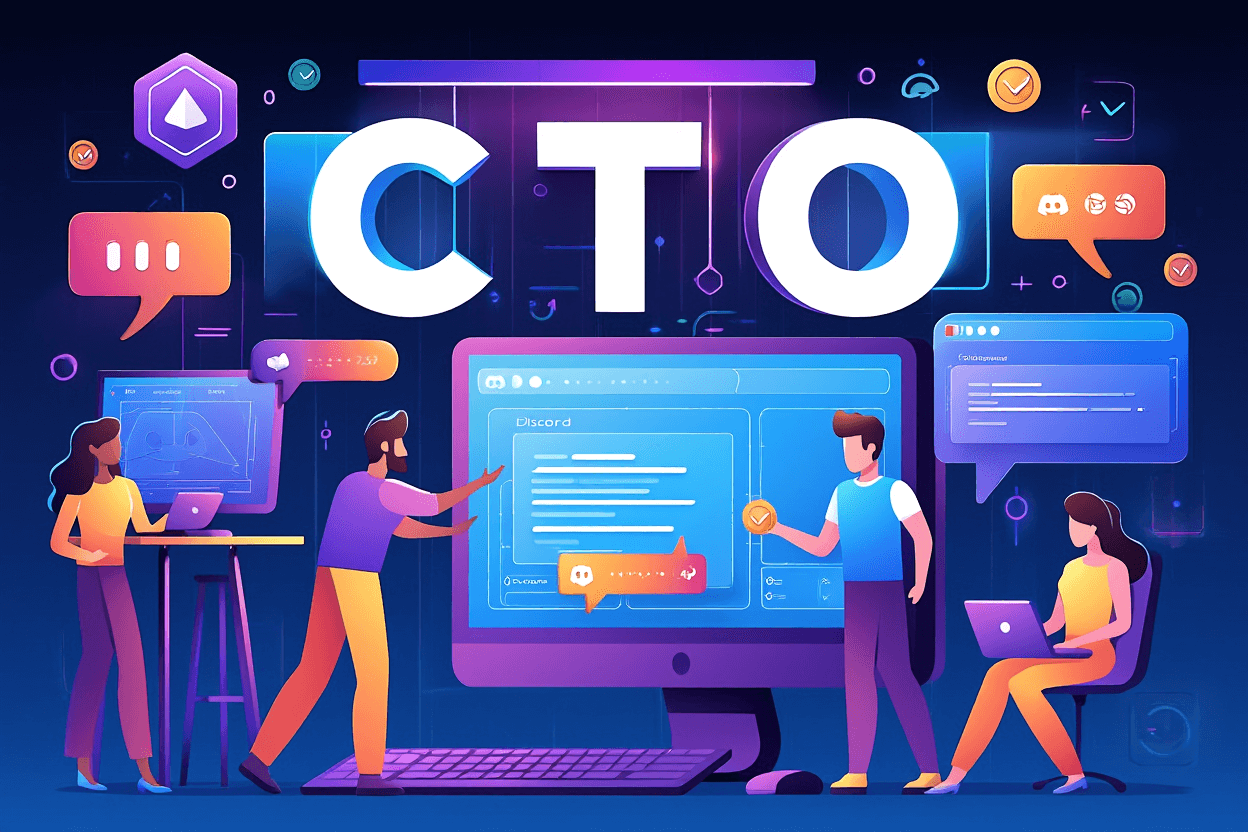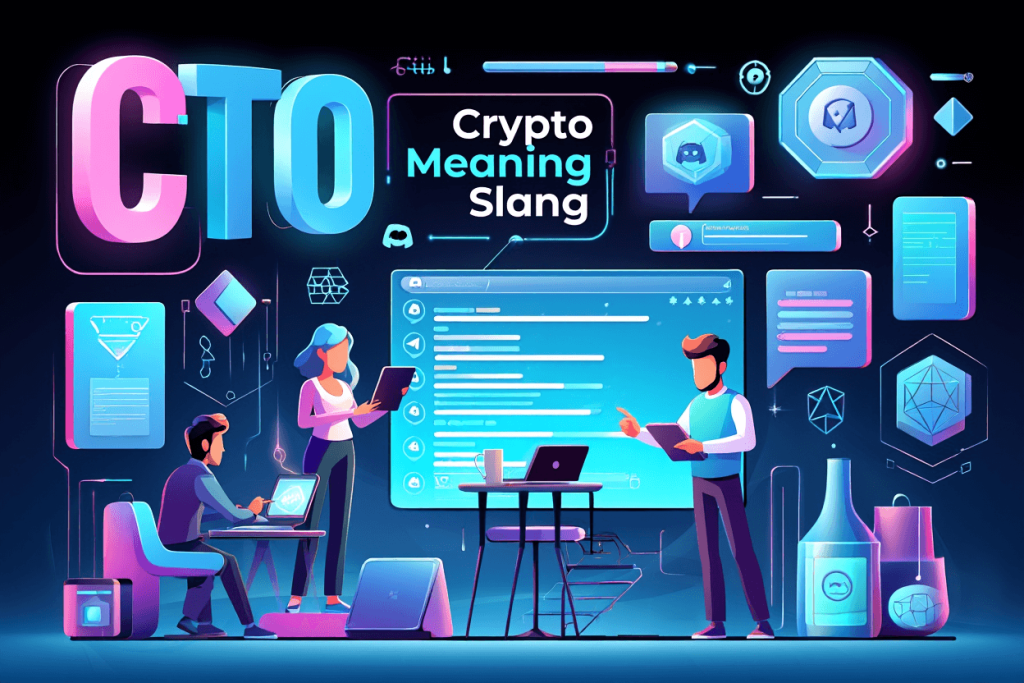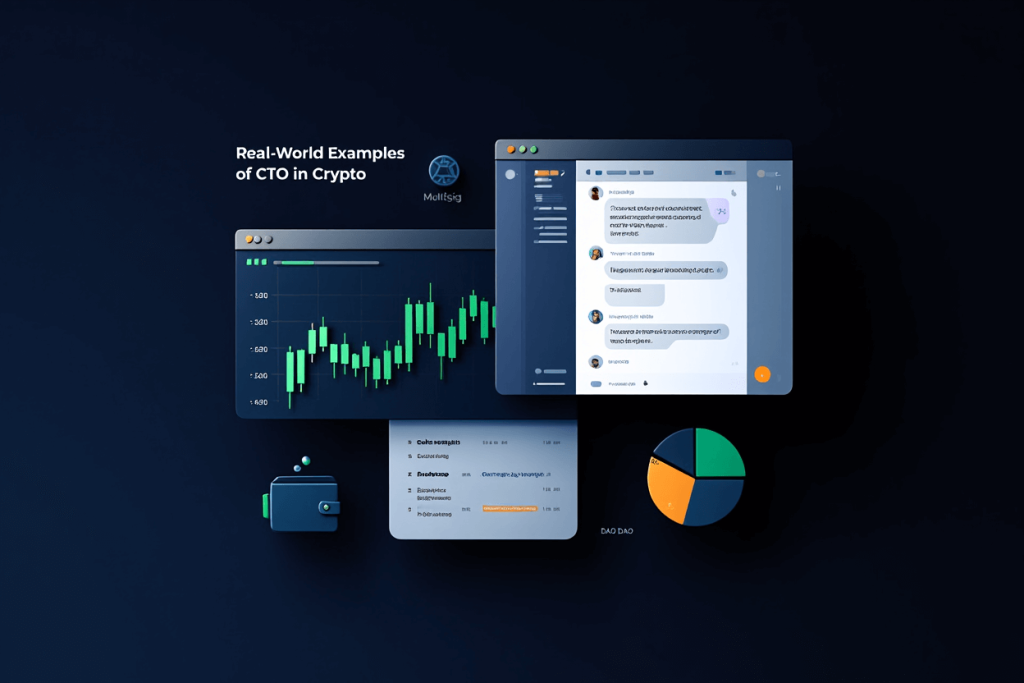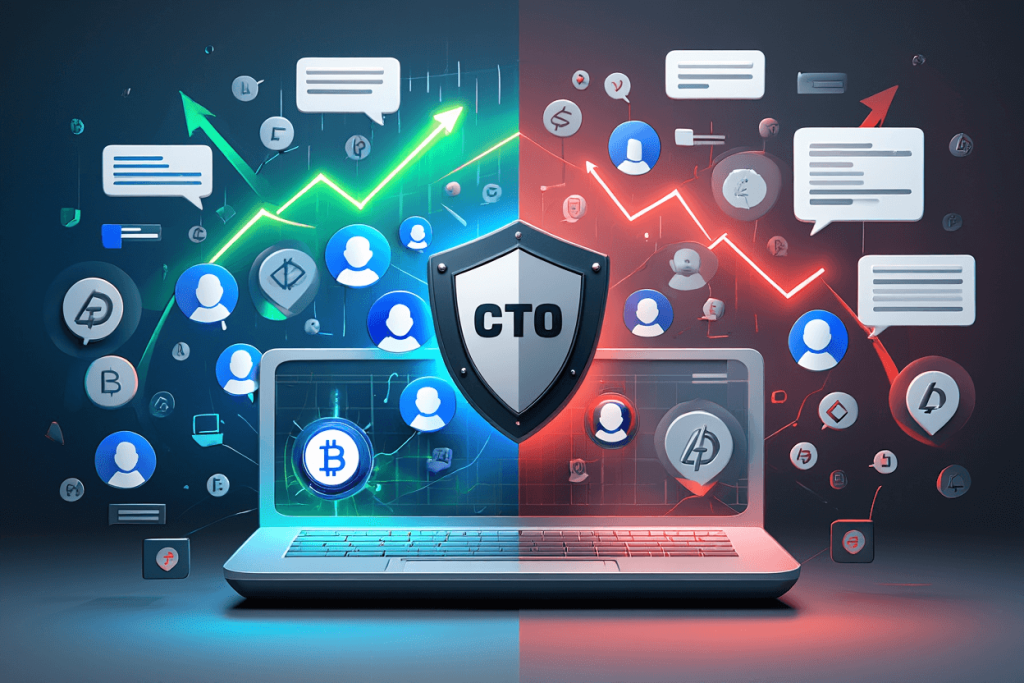Physical Address
304 North Cardinal St.
Dorchester Center, MA 02124
Physical Address
304 North Cardinal St.
Dorchester Center, MA 02124

In the fast-moving world of crypto slang, CTO crypto meaning slang has become a crucial term. Crypto is full of unique language, and as we head into 2025, understanding slang is more important than ever. Both newcomers and seasoned investors rely on crypto-specific terms to stay aligned with fast-moving trends, coordinate on-chain actions, and avoid costly mistakes. Slang doesn’t just build community, it can make or break your trading strategy, especially when social channels like Discord or X (Twitter) move faster than official news.
One term stirring up frequent debate is CTO in crypto discussions. You might have seen it in meme coin Telegram groups or DeFi forums and wondered: What does CTO even mean here? While CTO has several potential definitions, in today’s communities, it most commonly refers to a Community Takeover. Knowing the difference between Community Takeover and more traditional meanings (like Chief Technology Officer) is critical, as misunderstandings can attract scammers or lead to poor investment decisions.
For example, a meme coin community may celebrate a CTO, hoping for a rebound, while outsiders might misconstrue it as an executive hire. So, what exactly does CTO mean in modern crypto culture, and why should you care?
In crypto, CTO most often means Community Takeover. This slang describes a moment when a project’s community steps in to take control after the original developers leave, become inactive, or the project is otherwise abandoned. Unlike the familiar business title Chief Technology Officer, crypto’s CTO is about collective action rather than executive leadership. A CTO typically happens after signs of developer silence, failed promises, or even deliberate project handovers, most common in meme coins and underdog altcoins.

These takeovers are usually organized on platforms like Telegram, Discord, or X, where early holders, community managers, and sometimes new devs rally support. The term Community Takeover began surfacing during the meme coin boom around 2021–2023, as many novelty tokens lost original devs but still had loyal holders willing to revive the project.
Projects like SafeMoon Inu and others sparked widespread use of CTO as shorthand when communities took the reins. If you see CTO announced in a chatroom today, it’s likely signaling a major shift in project ownership, and possibilities for a fresh start or new roadmap. Next, let’s look at other meanings behind CTO and why context is crucial.
On forums or in whitepapers, CTO may refer to an executive or to a token sale event. For example, Project X’s new CTO joined this week refers to an executive, while CTO next month, get ready! could be a Consumer Token Offering. Misreading these can lead to false expectations, a risk in meme-coin circles where both meanings can overlap within the same chat thread. This reinforces the value of context and why clarity in definitions matters before making moves or interpreting key announcements.
To explore similar concepts, check our crypto knowledge section for beginner-friendly explanations.
The concept of Community Takeover arose as a grassroots solution to the recurrent problem of abandoned projects, especially during the explosive growth of meme coins between 2021 and 2023. Platforms like Telegram, Discord, and X (formerly Twitter) became hubs for these takeovers. When original developers exited, sometimes without notice, community members who still believed in the project would organize, rebrand, and launch coordinated CTOs.
The abbreviation CTO quickly became meme-worthy shorthand, spreading through hashtags and dedicated Discord role titles. Notable examples such as Mitchi, and rallies surrounding tokens like DogeBonk or SafeMoon Inu, brought legitimacy and awareness to the movement.
Over time, the phrase signified hope and self-sufficiency, turning failed projects into experiments in decentralized revival. As we transitioned towards 2025, CTO isn’t just a fallback, it’s sometimes even a strategic step, with communities preemptively ready to step in if leadership falters. These shifts laid the groundwork for the technical and social dynamics driving today’s successful takeovers, influencing how crypto projects are built, and sometimes rebuilt, from the ground up.
The term spreads rapidly through pinned messages, hashtags, and coordinated polls. In these environments, a CTO announcement can spark intense debate or optimism, depending on the project’s prior transparency. Next, let’s explore the mechanics of organizing a successful community takeover.
See more related articles:
CTOs can be either rescue missions or preemptive moves. For example, the SHIBA DOGE project’s 2023 CTO revived a dead token, while other takeovers turned out to be opportunistic, where new teams sought control for ulterior motives. A legitimate CTO is marked by transparent leadership, community polling, and clear communication; scammy CTOs often involve sock-puppet accounts, unclear code custody, or secretive wallet transfers. Knowing the trigger and approach helps investors gauge credibility before jumping in. Next, let’s dissect the logistics and steps involved in a successful CTO.
Projects like SaveTheMoon and others succeeded by openly documenting each step with diagrams, multisig signers, and GitHub updates, increasing trust among holders. This structure is increasingly formalized, particularly since the proliferation of DAO toolkits and transparent governance calls in recent Ethereum layer 2 and multi-chain environments. Next, we spotlight how governance beyond the takeover shape outcomes.
After a successful CTO, decentralized governance tools become central. Communities often use DAOs with real-time voting tools (like Snapshot or Tally), Discord polls, and multisig wallets for safeguarding funds. Best practices include:
Poorly governed CTOs are prone to infighting or fund loss, especially if multisig signers are anonymous or decentralized procedures aren’t followed. A safely run CTO leans into open, democratic processes, helping projects avoid common pitfalls and maintain long-term value growth. Ready to see real CTO results? Let’s look at specific examples from recent years.

These projects each transitioned from failed leadership to renewed utility and community, leveraging transparency and technical handover for enduring value. But not every CTO ends in a turnaround, which brings us to failed or problematic attempts.
Lessons: Watch for warning signs, closed-source wallets, unclear signers, or hype without documentation. Failed CTOs typically feature secrecy, rushed decisions, or absence of verifiable community voting. Thorough due diligence and demand for transparency can help mitigate risk when a CTO is announced.
See more related articles:
Below explained why CTOs Matter:

Community Takeovers put decentralization to a real-world test. Instead of relying solely on founders or core teams, the collective power of token holders is unleashed, matching the original ethos of Bitcoin and Ethereum. A CTO event empowers anyone with skin in the game to have a voice, set a roadmap, and genuinely participate in governance. This aligns with the not your keys, not your coins culture and ensures projects aren’t held hostage by single points of failure. As a result, more projects now build with potential CTOs in mind, making resilience a crypto trend to watch in 2025.
CTOs often attract new and old investors seeking underdog rebounds, but the sustainability of gains heavily hinges on how authentic and transparent the process is.
| Pros | Cons |
|---|---|
| Potential for high returns if project is revived | Risk of scams and failed relaunch |
| Community-driven improvements and upgrades | Diluted or unclear token control |
| Enhanced decentralization and resilience | Technical mismanagement (bugs, security lapses) |
Before investing in a CTO project, perform thorough research (DYOR). Look for active code reviews, open governance, and transparent leadership. While CTOs can breathe new life into tokens and DAOs, they carry substantial risk, especially when documentation is lacking or leadership is unproven. In the next section, you’ll find a glossary and quick evaluation tools for smarter decision-making.
| Term | Definition |
|---|---|
| DAO | Decentralized Autonomous Organization – A self-governing blockchain community. |
| Rug Pull | When devs exit with project funds, leaving holders at a loss. |
| Dev | Developer or technical lead behind a project. |
| Liquidity Lock | Securing project funds (to prevent immediate rug pulls). |
| Snapshot | A platform for on-chain and off-chain governance voting. |
| Multisig | Wallet requiring multiple signers for transactions, improving security. |
| Airdrop | Free token distribution, often for marketing or community rewards. |
| Smart Contract | Self-executing code that automates crypto transactions and governance. |
| Layer 2 | Scaling solution built atop main chains like Ethereum for faster or cheaper transactions. |
Looking ahead to 2025–2027, CTO as slang and practice is set for deeper integration into crypto’s evolving culture and technical frameworks. We’ll likely see:

As crypto language continues to evolve alongside new tech and regulations, CTOs will remain at the heart of community resilience, empowering users to shape, revive, and defend the projects they care about.
Understanding CTO in crypto isn’t just about deciphering slang, it’s about recognizing the shifting power dynamics that make blockchain unique. As Community Takeover becomes a dominant force in DeFi, meme coins, and even major protocols, the ability to distinguish legitimate, well-run CTOs from risky or scam attempts is key for every investor or builder.
The core strength of crypto remains in its community, and CTOs are a clear demonstration of decentralization in action. As trends point to more robust governance and increased adoption of CTO models across chains, staying informed about these developments is essential. Whether you’re a seasoned trader or new to blockchain, mastering terms like CTO, and knowing how to evaluate them, sets you apart in the fast-changing world of crypto in 2025 and beyond.
Web Tai Chinh serves as your go-to source for up-to-the-minute finance and crypto insights, offering reliable news and educational resources so you can make informed investment choices and fully understand every key financial term or market trend.
📞 Contact: 055 937 9204
✉️ Email: webtaichinh@gmail.com
📍 Address: 13 Ho Tung Mau, An Binh, Di An, Binh Duong